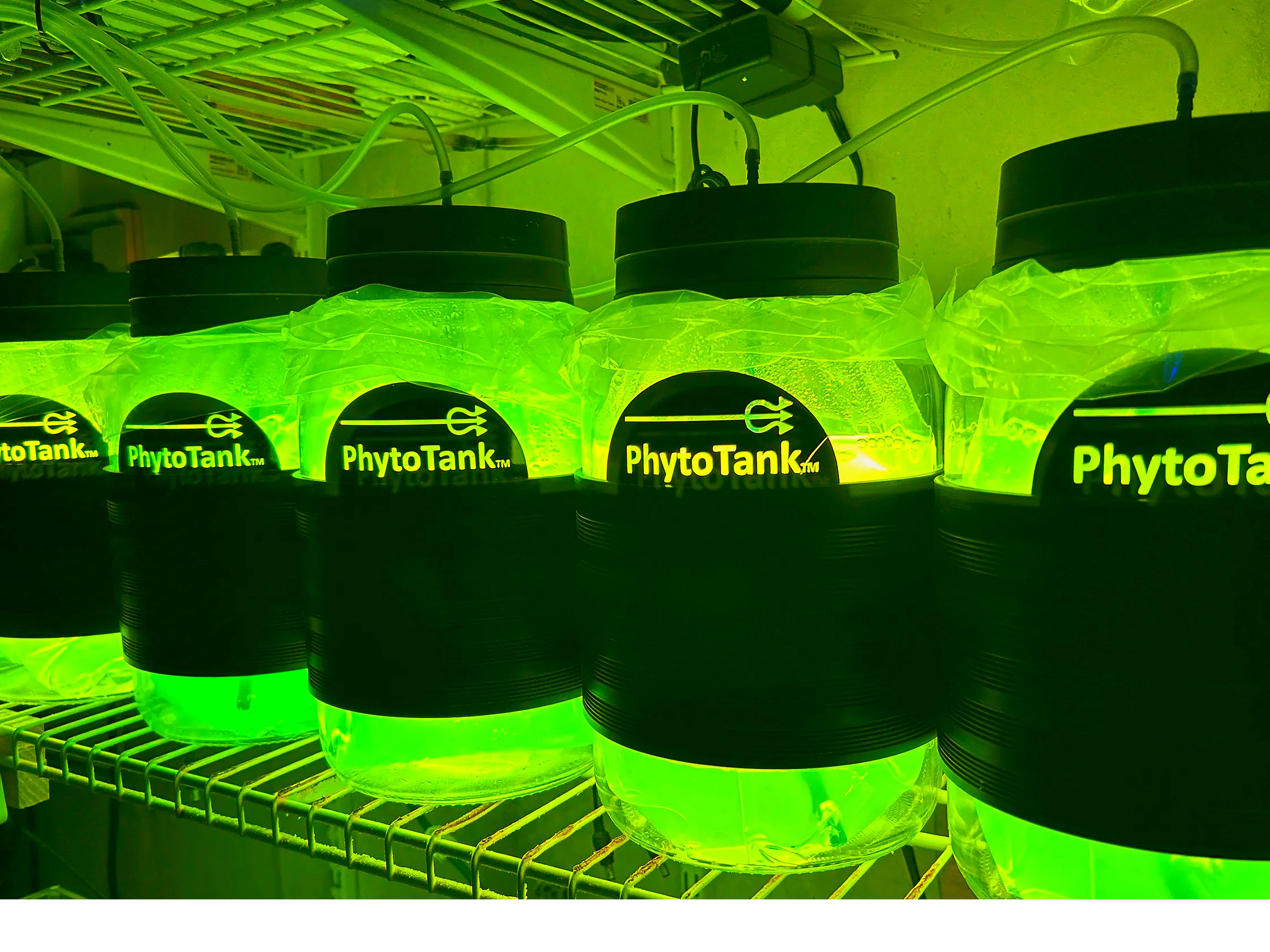- Joined
- Mar 22, 2020
- Messages
- 124
- Reaction score
- 113
Hi Gents!
I`ve been thinking about building a small farm to grow Phytoplankton for our Reeftanks at home.
We`ve got quiet some volume of saltwater here, 3000 Liters of Saltwater: Over the thumb. (Its a bit more)
Why: We want to support the smallest lifeforms in our reeftanks with proper food: namely phytoplankton.
All those tiny critters that live in the sand and rockwork.
And of course: we probably all try to mimic the oceans as good as possible and i believe that plankton is a big part of it.
My problem with buying plankton off the shelf is: the amount we require isn't affordable any more.
We require about 3L of plankton every day, and 1 liter is around 11 Bucks here.
Do the math: we are looking at 30 Bucks per day! Thats roughly 12k a year.
Note: When I say we require X Liters a day, this is just me following product instructions printed on some website.
Those instructions vary from vendor to vendor, but they are all in the ballpark of 70-100 ml per 100 Liter a day and thats how i came up with that number.
Sooo looking at the numbers this lead my to the conclusion: I need to do something different.
Either grow my own Plankton or find a affordable replacement Product. I don't know, maybe some concentrate or something.
Ultimatively: I don't want to spend more than 100 bucks on plankton a month. Either bought or self grown.
Is that realistic to achieve? I dont know. Thats just what i'd like things to be
Is anybody here that grows plancton like that?
I mean, i believe its really a challenge to grow plancton on your own and do it right:
- No contamination, i believe i read about some disease that can spread through plankton. (vibrio?)
- proper "sterilization" ... or probably more likely: pasteurization techniques.
- Get the right "strains"
- get the dosing of fertilizer right so i don't pollute our tanks
- keep a constant production
- when to harvest
So, i think its not a project that is done once one gets a reactor and some starter cultures.
Its about having/ establishing the right procedures and using the stuff right.
This starts when sizing the reactor, whether to have multiple reactors, having "primary cultures" that are known good in the fridge.
So, i am looking for people who have done that successfully and are willing to give me tips and advice on that journey.
And of course, if you can: Please help me decide whether its worth going down that road.
As always: Happy reefing everybody!
I`ve been thinking about building a small farm to grow Phytoplankton for our Reeftanks at home.
We`ve got quiet some volume of saltwater here, 3000 Liters of Saltwater: Over the thumb. (Its a bit more)
Why: We want to support the smallest lifeforms in our reeftanks with proper food: namely phytoplankton.
All those tiny critters that live in the sand and rockwork.
And of course: we probably all try to mimic the oceans as good as possible and i believe that plankton is a big part of it.
My problem with buying plankton off the shelf is: the amount we require isn't affordable any more.
We require about 3L of plankton every day, and 1 liter is around 11 Bucks here.
Do the math: we are looking at 30 Bucks per day! Thats roughly 12k a year.
Note: When I say we require X Liters a day, this is just me following product instructions printed on some website.
Those instructions vary from vendor to vendor, but they are all in the ballpark of 70-100 ml per 100 Liter a day and thats how i came up with that number.
Sooo looking at the numbers this lead my to the conclusion: I need to do something different.
Either grow my own Plankton or find a affordable replacement Product. I don't know, maybe some concentrate or something.
Ultimatively: I don't want to spend more than 100 bucks on plankton a month. Either bought or self grown.
Is that realistic to achieve? I dont know. Thats just what i'd like things to be
Is anybody here that grows plancton like that?
I mean, i believe its really a challenge to grow plancton on your own and do it right:
- No contamination, i believe i read about some disease that can spread through plankton. (vibrio?)
- proper "sterilization" ... or probably more likely: pasteurization techniques.
- Get the right "strains"
- get the dosing of fertilizer right so i don't pollute our tanks
- keep a constant production
- when to harvest
So, i think its not a project that is done once one gets a reactor and some starter cultures.
Its about having/ establishing the right procedures and using the stuff right.
This starts when sizing the reactor, whether to have multiple reactors, having "primary cultures" that are known good in the fridge.
So, i am looking for people who have done that successfully and are willing to give me tips and advice on that journey.
And of course, if you can: Please help me decide whether its worth going down that road.
As always: Happy reefing everybody!


















